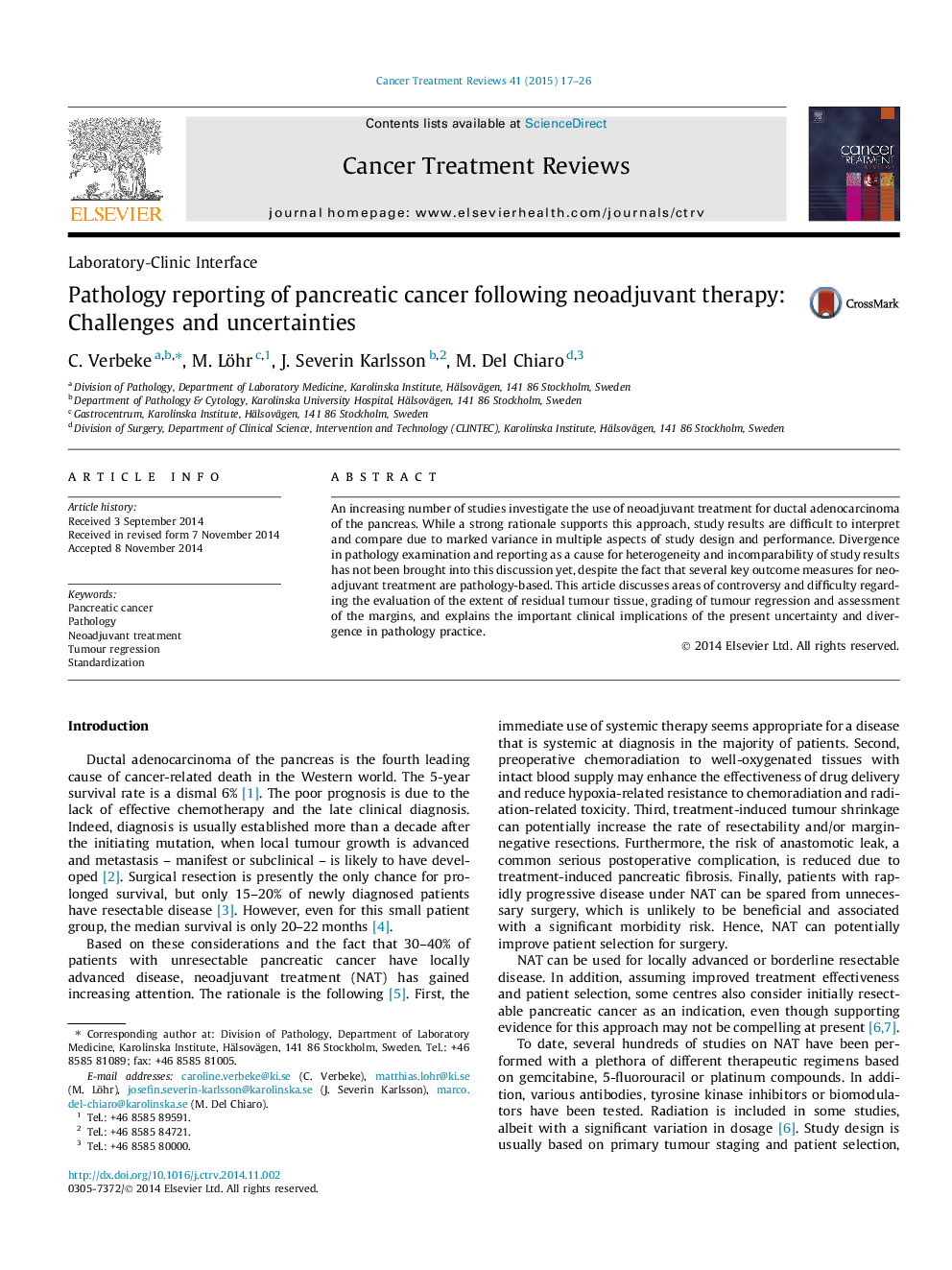| Article ID | Journal | Published Year | Pages | File Type |
|---|---|---|---|---|
| 3979790 | Cancer Treatment Reviews | 2015 | 10 Pages |
•Key outcome measures for neoadjuvant treatment (NAT) of pancreatic cancer (PC) are pathology-based.•Pathology examination of PC following NAT is difficult and lacks consensus.•Variation in sampling and regression grading affects the assessment of tumour response.•Margin assessment following NAT lacks an evidence-based definition.•Lack of uniformity in pathology assessment hampers the study of the efficacy of NAT of PC.
An increasing number of studies investigate the use of neoadjuvant treatment for ductal adenocarcinoma of the pancreas. While a strong rationale supports this approach, study results are difficult to interpret and compare due to marked variance in multiple aspects of study design and performance. Divergence in pathology examination and reporting as a cause for heterogeneity and incomparability of study results has not been brought into this discussion yet, despite the fact that several key outcome measures for neoadjuvant treatment are pathology-based. This article discusses areas of controversy and difficulty regarding the evaluation of the extent of residual tumour tissue, grading of tumour regression and assessment of the margins, and explains the important clinical implications of the present uncertainty and divergence in pathology practice.
